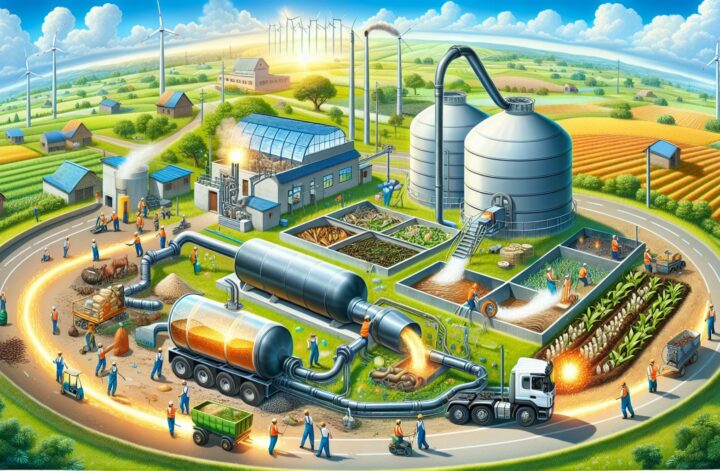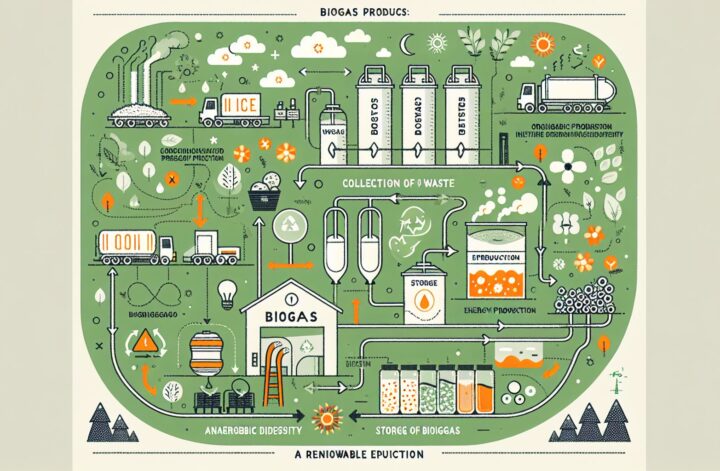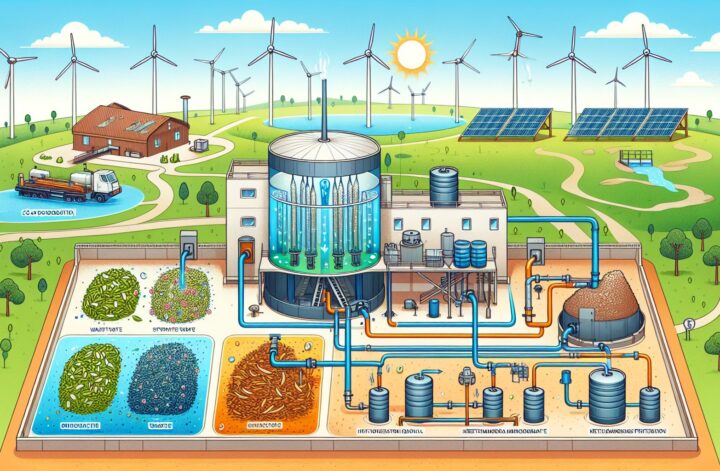The treatment of organic waste has been one of the great global challenges in the recent past. It is estimated that almost 1.3 billion tons of waste are being produced globally every year, and this number is expected to grow to 2.2 billion tons by 2025, according to the World Bank[^1^]. This increasing trend implies that we need more effective and sustainable ways to manage waste. The use of organic waste treatment methods is one of the strategies of significant importance toward achieving sustainability goals.
Understanding Organic Waste
Organic waste, also known as ‘green waste,’ refers to any waste material that originates from living organisms. It includes items like fruit peels, leaves, grass clippings, wood chips, and animal manure. These wastes, if not appropriately managed, can lead to severe environmental problems, such as air and water pollution, emission of harmful greenhouse gases, and even spread of diseases. Therefore, efficient ways of treating and disposing of these organic wastes are of utmost importance.
Different Organic Waste Treatment Techniques
Several treatment techniques have been developed over the years to address the problems associated with organic waste, and each comes with its pros and cons. In this article, we shall take a look at three main treatment methods:
- Composting
- Anaerobic Digestion
- Incineration
1. Composting
Composting is one of the oldest and most straightforward methods used for treating organic waste. It is a natural process that converts organic waste into a nutrient-rich soil conditioner, famously known as compost. This process involves the action of various microorganisms, which break down the organic waste in the presence of air. Moreover, the compost produced from this process can be used to improve the fertility of soils in gardening, landscaping, horticulture, and agriculture. Composting is environmentally friendly, as it reduces the need for synthetic fertilizers and results in fewer greenhouse gas emissions compared to rotting in landfills[^2^].
2. Anaerobic Digestion
Anaerobic digestion is another method used for treating organic waste. This process involves decomposing the organic waste in the absence of oxygen. The waste is placed in an anaerobic digester where it is broken down by microorganisms. This process results in the production of biogas (a renewable source of energy that contains methane) and digestate, a rich source of nutrients that can be used as a fertilizer. Besides, anaerobic digestion reduces the amount of waste that ends up in landfills, thereby reducing the emission of harmful greenhouse gases like methane and carbon dioxide[^3^].
3. Incineration
Incineration is the process of burning organic waste at high temperatures to reduce its volume and mass. This technique is often used to treat waste that cannot be recycled or composted. The energy produced from this process can then be used to generate heat or electricity. However, proper pollution control measures must be put in place; otherwise, the process could lead to the emission of harmful pollutants into the atmosphere.
Challenges and Way Forward
Despite the existing organic waste treatment methods, there are still some challenges that need to be addressed. For instance, not all organic waste can be composted or incinerated. Some types of waste require specialized treatment approach. Besides, the initial cost of setting up some of these treatment methods (like anaerobic digesters and incinerators) can be quite high.
However, the benefits of managing organic waste effectively far outweigh the challenges. Therefore, more research and investment should be done to develop more efficient and sustainable organic waste treatment methods. Also, public awareness about waste management should be increased to foster more responsible waste disposal practices.
The future of our planet depends on how well we can manage our wastes. Therefore, it is everyone’s responsibility to play a part in making sure that we live in a clean and healthy environment.
References
[^1^]: World Bank. (2019). Waste Generation. [online] Available at https://www.worldbank.org/en/topic/urbandevelopment/brief/solid-waste-management#1 [Accessed 20 Nov. 2022].
[^2^]: Young, G. (2016). What Is Composting and How Does It Work? [online] Green Matters. Available at https://www.greenmatters.com/news/2022/02/23/26382749/composting-how-does-it-work [Accessed 20 Nov. 2022].
[^3^]: Energy.gov. (n.d.). How Does Anaerobic Digestion Work? | Department of Energy. [online] Available at https://www.energy.gov/eere/bioenergy/how-does-anaerobic-digestion-work [Accessed 20 Nov. 2022].




